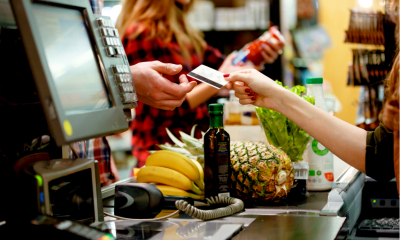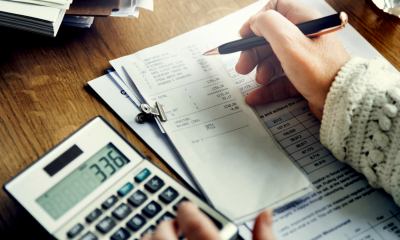
Making Tax Digital - the government's plan to transform the way taxpayers communicate with HMRC - is being gradually rolled it. The long-term goal of MTC is for all taxpayers, including businesses, sole traders and landlords, to file their tax information using digital apps on a quarterly basis.
MTD for VAT was introduced in April 2019. Here's what you need to know about filing VAT returns under the Making Tax Digital system.
What is MTD for VAT?
Making Tax Digital for VAT means that VAT-registered businesses must keep VAT records and file VAT returns digitally, using MTD-compatible software. This software is likely to be a cloud-based app that you can use from your smartphone.
The frequency of VAT reporting did not change under MTD. Nor did the information you must input. The big change was the fact that it became compulsory (with limited exceptions) to use approved software.
Does Making Tax Digital for VAT apply to me?
MTD for VAT applys to all VAT-registered businesses. The VAT registration threshold is £90,000.
The rules do not apply to businesses that are not VAT registered and some limited cases where an exemption applies.
How do I choose the right accounting software for Making Tax Digital?
There is a wide range of accounting software solutions that are compatible with Making Tax Digital. These are all commercial products; most of them work on a subscription basis.
Software designed for MTD makes it easy to file your VAT returns. The software uses the information from your accounting records. When you tell the software to file your return, it automatically links to HMRC’s systems.
The first step is to make sure that your preferred software is what HMRC calls "functional compatible software". In other words, can it connect to HMRC via an Application Programming Interface (API)?
If you already use software to keep your business records, check with your software provider to find out if it is MTD-compatible.
If, like a lot of small businesses, you file your own VAT returns, then an accountant will be able to guide you when choosing the right software. There is a list of all MTD-compatible software on the government website.
Can I carry on using spreadsheets for my VAT accounts?
The government has said that spreadsheets can be a part of digital record-keeping under Making Tax Digital. However, if you are using a spreadsheet, it must be digitally linked to whatever software you use to file VAT returns.
You cannot use a spreadsheet to keep your VAT records, and then manually copy information into another system used to submit your VAT returns. Instead, you use special ‘bridging’ software that electronically connects the spreadsheet directly to HMRC’s systems.
Making Tax Digital is being extended to income tax from April 2026 for sole traders and landlords with a gross trading or gross rental income of more than £50,000. So, it may make more sense to start using modern accounting software now to handle VAT.
How much does MTD-compatible software cost?
Most MTD-compatible software solutions operate on a subscription basis. Costs vary but most packages cost between £10 and £30 a month, depending on functionality. For more basic spreadsheet bridging software there are a few cheap options from £15 for a year, or even possibly free software.
There may be some additional set-up costs for your business. You may want to invest in a new laptop or a better smartphone for example. You will also need to consider the time it takes you to input information into the new system.
Can my accountant still file my VAT return under Making Tax Digital?
If your accountant normally files your VAT return for you, your accountant is an "agent" who is acting on your behalf. Accountants can continue to make VAT submissions on behalf of their clients and will be able to file other types of MTD return in the future as well. You just need to authorise them to act on your behalf.
It is also possible to input all your VAT information into an approved app yourself but then ask your accountant to check it before they submit it to HMRC.
You need to ensure that the whole system – from your VAT records to your VAT returns – is digitally linked. So if you keep the VAT records yourself, the data needs to be transferred to your accountant digitally. A cloud-based system that both you and your accountant can access is one solution.
You can find detailed guidance on software requirements and digital links in HMRC’s VAT Notice 700/22 which explains the rules for Making Tax Digital for VAT.


